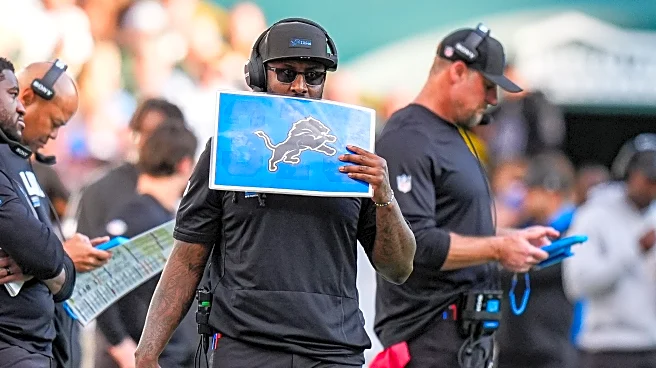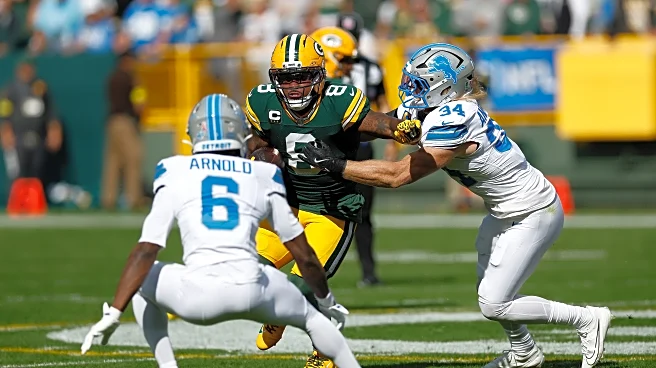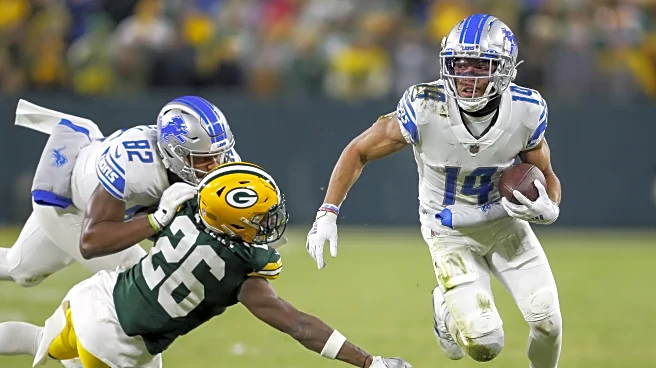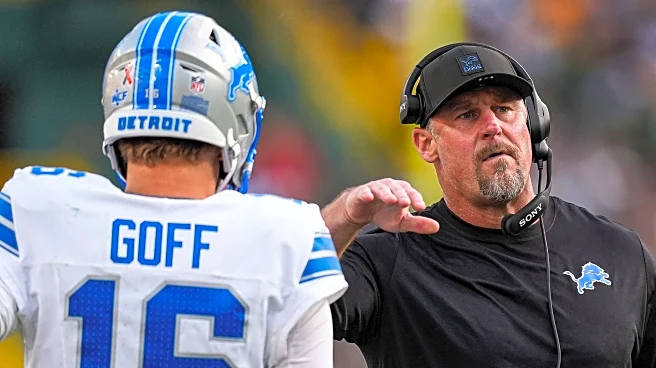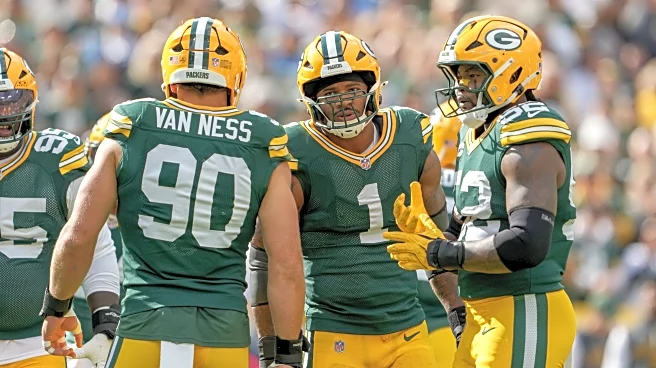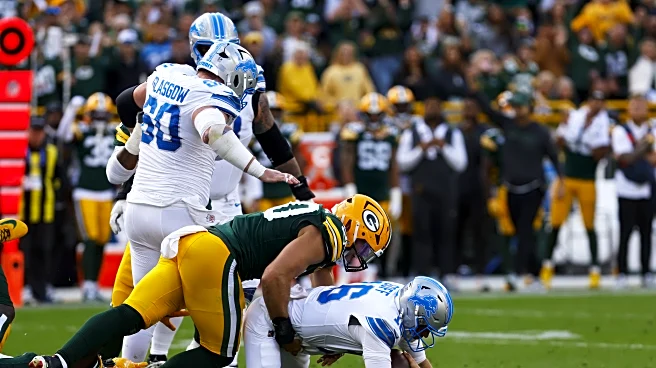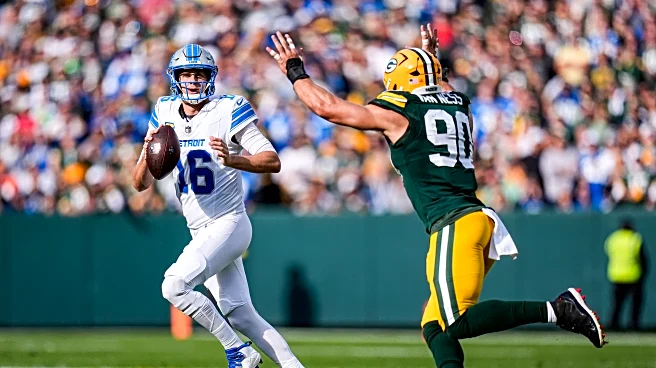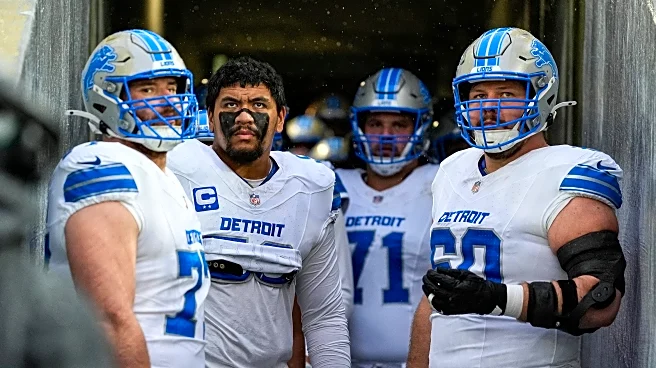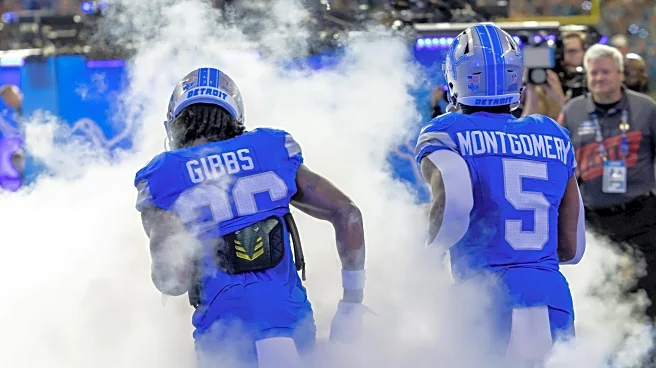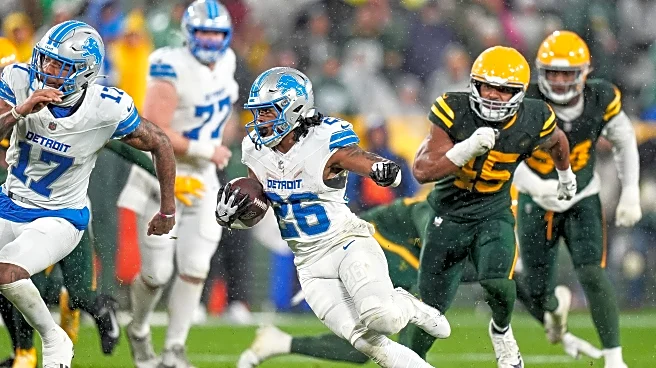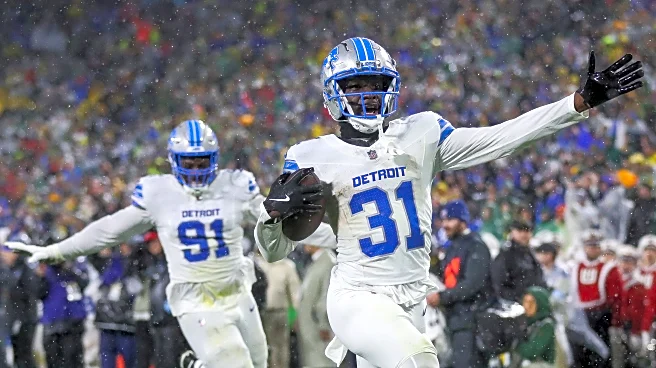
The Detroit Lions’ season opener against the Green Bay Packers was the kind of performance that would require an immediate parent-teacher conference. In some ways, that’s a good thing. Early intervention is important, and hopefully a wake-up call to kick off the season is exactly what the Lions need to fix what appear to be some major problems.
But in the meantime, we’re sending Roary home with an ugly-looking report card. Here are our grades from Detroit’s 27-13 loss to the Packers.
Quarterback: C-
It’s hard to grade
Jared Goff in a vacuum, considering he had no help from his offensive line or a running game. On a very basic level, he was mostly accurate, took what the defense gave him, and actually drove the offense down the field for four red zone trips, including three very patient drives of 13 or more plays.
But Goff also rarely did anything to elevate the offense. There was no threading of the needle, managing the pocket to create extra time, or throwing any players open. And there was a deadly red zone interception that was largely his fault. And by his own admission, some of the miscommunication and mental errors from the entire offense fall in his lap.
“I am more so just urgent about getting details fixed and making sure that everyone is on the same page and that our communication is better and getting lined up correctly and all that stuff,” Goff said about the red zone issues. “Ultimately, a lot of it falls on me. So, there are some things that I can do better.”
Running backs: D
Again, the running backs were given no favors from the offensive line, but sometimes Jahmyr Gibbs was only adding to the problem. His 6-yard loss in a goal-to-go situation was the definition of trying to do too much, and he was guilty of that on several occasions. With the Lions in checkdown mode, it was on Gibbs to create extra yardage with his 10 receptions, and his 30 total receiving yards was a failing to do that.
I thought David Montgomery was fine. While he only averaged 2.3 yards per carry, his success rate (45.5%) was actually quite good and much better than Gibbs’ (22.2%).
Tight ends: B+
I’ll have to go back and check out how this unit did in terms of blocking, but Sam LaPorta’s threat as a receiver lifts this unit to the highest grade of any. His six catches for 79 yards is the fifth-best performance of his young career by yardage, and his best game against any NFC North opponent.
Wide receivers: C-
This is another one where the tape could tell a different story. From my live viewing, it certainly felt like Goff was forced to go through his entire progression far more often than he should. Was that a schematic issue or the result of Lions receivers failing to produce any separation with their routes? I understand the Packers’ game plan was to keep everything in front of them and prevent the big plays, but Detroit typically countered that with attacking the intermediate middle of the field, and we saw none of that from the receivers.
The positives, though, were that Detroit’s receivers didn’t struggle with drops, and Isaac TeSlaa’s touchdown catch may be the best one we see all year.
Offensive line: F
There’s no sugar-coating this performance. It was awful front to back. In terms of run blocking, there is no better description of how disastrous the offensive line was than this stat from NextGenStats:
“The Packers hit Lions ball carriers behind the line of scrimmage on 16 of 22 carries (72.7%), the highest rate the Lions have allowed in a game under Dan Campbell.”
In pass protection, the Lions ceded four sacks, nine quarterback hits, and countless more hurries.
Defensive line: C-
The good news is that the Lions run defense looked as good as advertised (until they showed a concerning lack of spirit late in the fourth quarter). The bad news is that the pass rush seemed to confirm our deepest worries about the roster. Aidan Hutchinson saw double teams and chips all day, but his talent level requires him to beat those. And everyone else who had one-on-one opportunities failed to turn those into pressures.
But things actually started to look better in the second half. The problem was Green Bay didn’t have to throw the ball that much—Jordan Love had just six dropbacks in the final two quarters. So while the Lions’ pressure numbers are going to look very small, their pressure percentage (34.8%, per NFL Pro) was actually middle of the pack for Week 1 (13th).
Linebackers: B
Jack Campbell failed to drop back deep enough in coverage on Green Bay’s first touchdown, but it’s hard to point to anything else that falls on the linebacking crew’s shoulders. Jack Campbell was a force in the run game, Derrick Barnes had a key TFL on third down, and Alex Anzalone looked solid in coverage. Green Bay has a solid pair of tight ends, but they combined for just three catches for 20 yards and a touchdown. Josh Jacobs had just a single catch for 4 yards.
Secondary: D
It was a really rough start for the secondary on the first two drives, with Love finding wide open receivers early and often. They weren’t helped by a pass rush that needed a couple quarters to find its footing, but the Packers receiving corps is not filled with world-beaters. It was disappointing to see what looked like sticky training camp coverage struggle when the lights were on.
That said, it’s easy to forget that Terrion Arnold forced two incompletions, mostly because it got overshadowed on the next drive when he gave up back-to-back big plays.
Special teams: D
Jake Bates made both of his field goals and an extra point. That’s about where the good news ends with this unit.
Detroit’s kick return game was lifeless and Jacob Saylors made a couple mistakes by taking it out of the end zone when the Lions could’ve taken a touchback to the 35-yard line (maybe a coaching mistake?). A false start penalty (that admittedly should’ve been an offsides penalty on the Packers) cost Detroit 30 yards in field position. Bates booted a ball into the end zone. Kalif Raymond’s ugly punt return at the end of the first half cost Detroit field position and time. Heck, even Jack Fox was thoroughly beaten by Packers punter Daniel Whelan, who averaged 7.4 more yards per punt than Detroit.
Coaching: F
It was not a great debut for either coordinator. On offense, the Lions failed to come up with any way to break the Packers’ commitment to taking away the deep ball—something that was well known about their defensive strategy. Defensively, Kelvin Sheppard’s play calling was certainly questionable, particularly on critical third downs.
While criticizing play calling is low-hanging fruit and easy to do with hindsight, a good way to assess how a game is being coordinated is success in two key metrics: red zone and third down. Here’s how the Lions fared in both of those categories:
Third down efficiency:
- Lions: 5-of-15 (33%)
- Packers: 4-of-10 (40%)
Red zone efficiency:
- Lions: 1-of-4 (25%)
- Packers: 3-of-5 (60%)
And those numbers are a bit inflated in Detroit’s favor since the Packers toned down their aggressiveness in the second half.
As for Dan Campbell, there weren’t many in-game things I would question. I know Tony Romo was adamant that he should have called a timeout on defense toward the end of the first half, but it was a third-and-2 situation for Green Bay. It’s very possible if Campbell had called that timeout that the Packers would have gotten more aggressive on offense. Instead, they ran unsuccessfully and the Lions got the ball back for an unlikely shot at points.
That said, there are some things to naturally question about Campbell’s ability to get the team prepared in Week 1. The Lions struggled offensively out of the gate last year, too, scoring just 20, 16, and 20 points in regulation the first three weeks of the season. I think there’s enough room here to question how the Lions prepare in training camp and the preseason.
